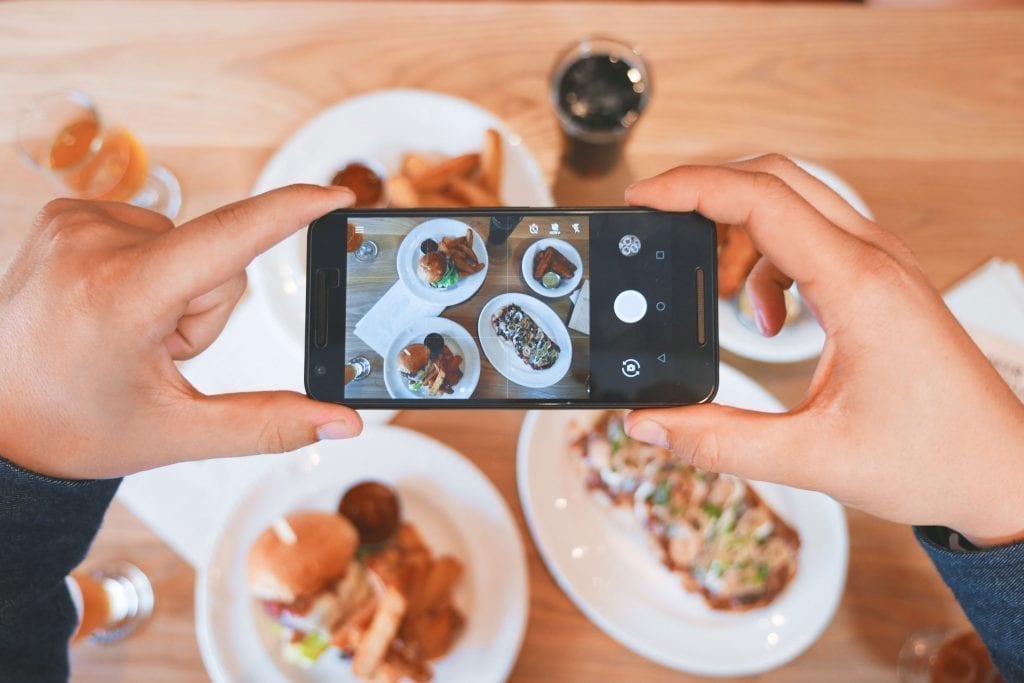TL;DR
- Creating ‘SMART’ marketing goals can give small businesses a better idea of where to spend their budget.
- Researching your competitors and spending your budget in areas they’re lacking can drive more customers to your business.
- Though organic social media is free, it’s still just as significant as paid social media.
- Money doesn’t equal leads – research, testing and strategic decisions do.
Social media spending is expected to rise by 73% over the next five years.
No matter the size of your business, having a realistic social media budget is crucial to your success. Not just because you’ll be able to improve your paid ads, but because it allows for more internal resources, time and effort to be spent on organic traffic.
In return, you can drive more growth for your business, build brand awareness and strengthen customer loyalty – with budget left over for creative ad hoc projects.
But setting a budget can be difficult. For some SME’s, their social media budget is spent entirely in the wrong areas, causing them to fall behind their competitors and their social accounts to stagnate.
Which brings us nicely onto today’s question.
“Dear Adzooma,
I help run a rustic cafe in the Peak District. It’s a lovely place, but a bit out of the way. It’s something that travellers stumbled across on their rambles.
We started posting things ad hoc on Instagram and Facebook and it started to build an interest. We found customers actually recommended us to new people and more people started coming through the doors.
Now we’re looking to do it seriously and have put a set budget aside. But with everything being ad hoc before, we’re not sure how much we need to spend on advertising or running our profiles as normal.
So, where should we spend our social media budget?
Thanks!”
James
Congrats on your social media success so far, James!
Looks like you’ve stumbled on a taste of what you could achieve with more budget and time. Now, speaking of this budget, it’s not an easy one to answer.
There’s no straight forward split or guide. I’m not going to tell you to put 60% into advertising and 40% on your normal profiles. It all depends on one key thing: your goals.

Work out what you want to achieve
If you’re going to take anything from this article, make it this:
You need a clear objective before you start spending your budget.
Don’t get me wrong, there are other factors you need to consider too, but deciding what you want from your socials always comes first. You can’t spend your budget in the right places otherwise.
Think about every time you see an irrelevant ad. That’s someone’s budget wasted targeting the wrong people, in the wrong place, with the wrong content. But because they’ve used paid marketing, they assume the outcome will be better.
For a better example, imagine buying an outfit with no idea where you’re going. You’d spend the whole day splurging on fancy clothes that might never get worn, all for an event that ‘might’ happen.
You’d be wasting your budget – just like businesses who spend money on paid ads for the sake of it.
Put simply, your social media budget depends on your goals, the number of customers you want to reach and most importantly, the size of your business.
- As a small business, you should start by testing different platforms and creating ‘SMART’ marketing goals that you can work towards.
- As a large or medium-sized business, research your competitors and find out what differentiates your brand from theirs. If their posts don’t perform very well, you could create a content-driven strategy to encourage more engagement.
What does your social media budget entail?
Many businesses assume that having a social media budget means having money to spend on paid adverts, but that’s only half of it. Spending your budget wisely also means making use of free services so that you can maximise your paid advertising and make a bigger impact.
So while some traffic is free (organic), that doesn’t mean it’s worthless. A lot of time and resource is still put into it to attract customers in the first place.
Organic
Organic social media is everything you aren’t directly paying for.
This includes the day-to-day activities you do without even thinking about, such as replying to customers, naturally building an audience and posting regular updates. Basically, the things you do on your personal accounts.
It may be technically free, but it takes time. And time is money.
- As a small business, you can use organic social media to build an audience and show that you’re a genuine brand. Start small, post consistently (not spammy) and make sure you respond to mentions – both good and bad.
- As a medium-sized business, take the time to create an individual strategy for each social media platform so that you can repurpose content and reach a wider audience.
- As a large business, set yourself apart with amazing customer service that enhances your brand. Make use of your team to remain at the front of the conversation while simultaneously posting engaging content.

Paid social
Paid social is the exact opposite.
It involves all of the advertising you pay for, including boosted posts, native ads, in-stream video ads and story ads. This type of advertising can help you work out the lifetime value of your customers so you know where to invest your budget in the future.
While organic social media helps you inject personality, paid ads can amplify your results, help you reach an ultra-targeted audience and most importantly, provide measurable data.
- As a small business, run a few ads at a time and see how they perform. Target a narrow audience without excluding too many people, e.g. East Midlands rather than the entire UK population.
- As a medium-sized business, look into more advanced ads to hit your customers while they’re browsing, e.g. Facebook Messenger ads, Instagram Rewarded videos and Twitter Conversational ads.
- As a large business, work smarter, not harder. Use social media management tools like Crowdfire and PromoRepublic to streamline your processes, monitor your ad performance and gain valuable insight into multiple channels.
Want more information? Read our article on how to choose the best social media marketing services.
Which social media platforms are right for my company?
To help you make up your mind, here are loads of relevant social media stats to leaf through, because making the most of your budget doesn’t mean paying for sponsored posts on every single platform.
It’s about maximising results on the platforms that work for you, rather than trying to make platforms work for you with paid ads.
No one on Linkedin cares about your vintage 80’s fashion pieces whether you’ve paid for them to see your ad or not. They care about making professional contacts, business opportunities and engaging in corporate conversations.
Splashing your budget on any and every platform will only drive customers further away from you and lower your ROI (return on investment).
- As a small business, use a couple of platforms like Facebook and Twitter/Instagram to begin with. Do some research into similar brands and see where they get the most engagement.
- As a large or medium-sized business, advertise on Facebook, Twitter and Instagram simultaneously. Share similar content across all platforms and monitor engagement to see what works best, before expanding your reach across the web.
How much money should you spend in total?
There are no strict rules here.
You’ve probably seen some numbers floating around the internet or been advised to spend X amount a month by your financial friend. They’re wrong.
You won’t know exactly how much you should or shouldn’t spend on social media advertising until you get started and measure the results. Every business is different. Someone selling pensioner socks wouldn’t benefit from spending £70,000 on Instagram advertising as much as someone selling OTT utility mesh neon belted chain outfits for festival-goers.
Not because pensioner socks are terrible (if you sell them, we’re sorry), but because 65% of Instagram users are 18-34, and only 2.8% are 65+.
The amount of money you spend depends on how much you’re going to get out of each platform. If 90% of your customers are on Facebook, Facebook advertising is for you.
If your business is completely B2C, avoid Linkedin at all costs.
- As a small business, start small rather than trying to splurge straight away. But don’t spend so little that it doesn’t make a difference.
- As a large or medium-sized business, find out where your customers are and spend the most money on those platforms. Pay attention to where your ads are being served, as like Facebook Ads, you have the choice to set a daily or lifetime budget.
The wiser you are, the higher your chances of success

As social media spending is expected to skyrocket, you can’t afford to spend your budget with your eyes shut. Your competitors would steal your customers.
But that doesn’t mean you need to go searching for the ‘recommended’ budget or copy what everyone else is doing. The amount of money, time and resources you put into your marketing entirely depends on your goals.
For example, if you want a few customers, you don’t need to spend £2,000 every day. But if you want to reach millions of people, get more leads and have a consistent stream of customers, you might consider it.
Ultimately, be realistic for the size of your business and account for both organic and paid social media, and you’ll be on your way to success.
All the best,
Katherine.



